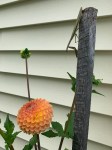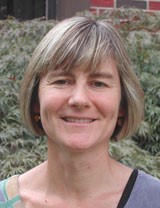by Jessica Obi, MD
On March 15, 2021, I found out I didn’t match. Needless to say, I felt alone, disappointed, and uncertain of my next step(s). “Dr. Obi!” is what family and friends would call me. The next question I would hear and would still feel uncomfortable answering was, “Which hospital do you work in?” or “What residency program did you match to?” My reply would always leave them asking, “It’s not automatic to match into a program?” followed by “I thought there weren’t enough physicians?” Then my favorite question, “So what are you to do now?” Although these questions are asked from a sincere place and valid, I could not, and still sometimes can’t help but question my worth, intelligence or if I made the right decision to pursue a medical degree. I feel the medical educational system is broken in that it lacks support for candidates like myself – support that includes mentors for such situations and jobs that would allow our degrees to still be useful. Instead, unmatched candidates are left to scramble for positions and other areas of work to repay student loans. The worst part of not matching is not having a sure direction to follow that would guarantee matching during the Supplemental Offer and Acceptance Program (SOAP) or the next cycle.
As any unmatched candidate would do, I began searching for mentorship and guidance. I happened to join Twitter to network and follow physicians, and by chance stumbled upon a few accounts dedicated to helping the unmatched. I was able to learn of zoom webinars dedicated to guiding unmatched applicants down this tricky road in terms of personal statements, letters of recommendation, curriculum vitae, and networking.1-2 Of course, my family, friends, and medical school have been supportive; however, to my utmost surprise, social media, particularly Twitter’s @Inside_TheMatch and @unlikelymds, has provided the most useful support. I have met and networked with awesome physicians and mentors via social media, and I have also found a peer support group with the same goal of matching. This has undoubtedly powered my strength to persevere.
The recent match cycle left many unmatched with unanswered questions. There were 42,508 active applicants and roughly 6,254 candidates that went unmatched. Yet, we are forced to forge a unique path to residency. As I reflect on this, I find myself finally at peace to have had this experience. I can use my struggle to gain empathy and experience that will help my patients navigate their struggles e.g., decreasing blood sugar or losing weight. My struggle to achieve residency is analogous to a patient’s struggle to achieve healthy outcomes, and in both cases, it is crucial to have proper guidance and strategy. My attributes of resilience and perseverance developed over this period, will fuel my passion and strength.
I believe every path, albeit hazy, is unique to the individual whether one is a patient, student, resident, or a physician. Some practices I’ve adopted to cope include remembering my why and my faith, mentorship, networking with other qualified candidates, and following the stories of others who have previously tread this path and are now residents. Currently, I’m also working on a few projects that I’m hopeful will be ready for the next match cycle.
Creating a path to reach this goal is not easy. I find on this journey that I’m developing resilience, endurance and relationships. I’m essentially creating a story, my story, that just may provide enough hope for that competent unmatched candidate – who may be on the verge of quitting – to not give up.
To all the qualified unmatched reapplicants, you’re not alone. There is a virtual community of faculty, residents, physicians, your peers, that are supportive and are willing to aid as you carve your unique path to matching.
There is hope. Keep going.

References
1. van de Ridder, J.M.M. [@MvdRidder]. (2021, April 28). INVITATION Zoom network meeting for UNMATCHED STUDENTS, organized by UNMATCHED students. Please register in advance. Please RT.[Tweet]. Twitter.
2. Stulak, J. [@JohnStulakMD]. (2021, April 19). As promised, for those who went unmatched in #MatchDay2021, feel free to sign up for an informal webinar in which we give our insights and your answer questions No matter who or where you are, we are happy to help and be a resource [Image attached]. [Tweet]. Twitter.
Acknowledgements
I would like to thank Kyle Swearingen, MD, Emmy Abraham, MD, and Monica van de Ridder, PhD for their support and feedback on the earlier drafts of my reflection.

